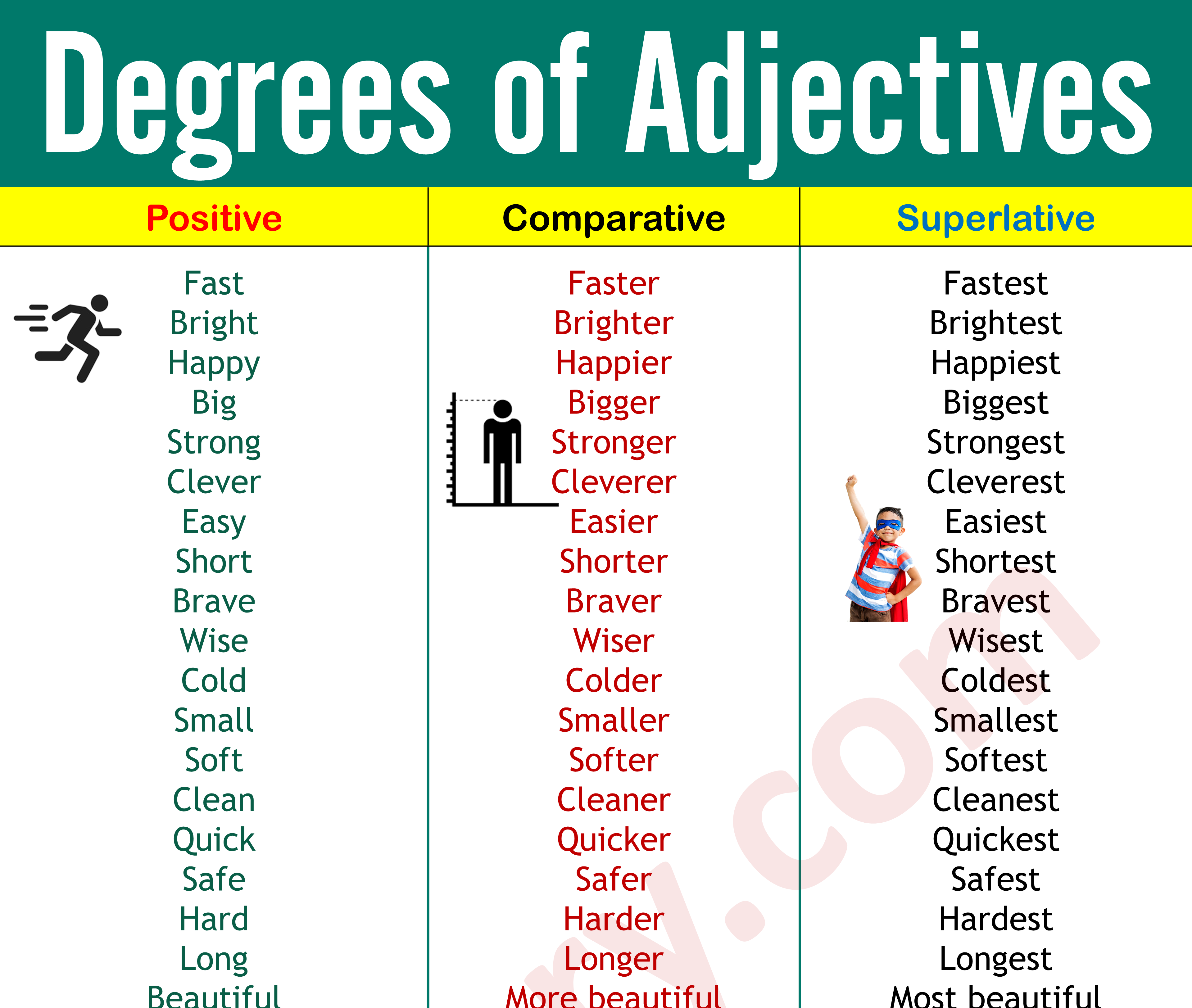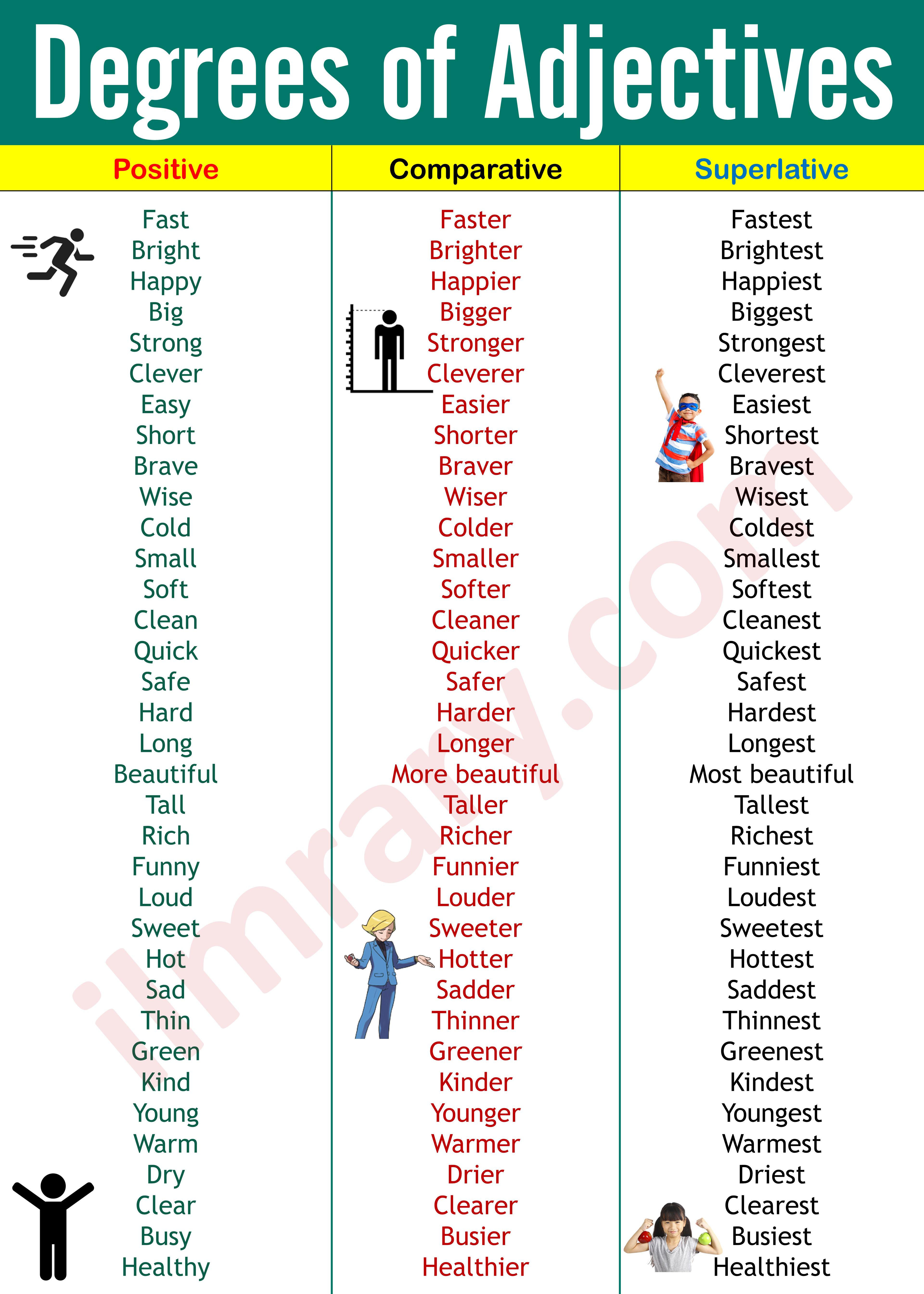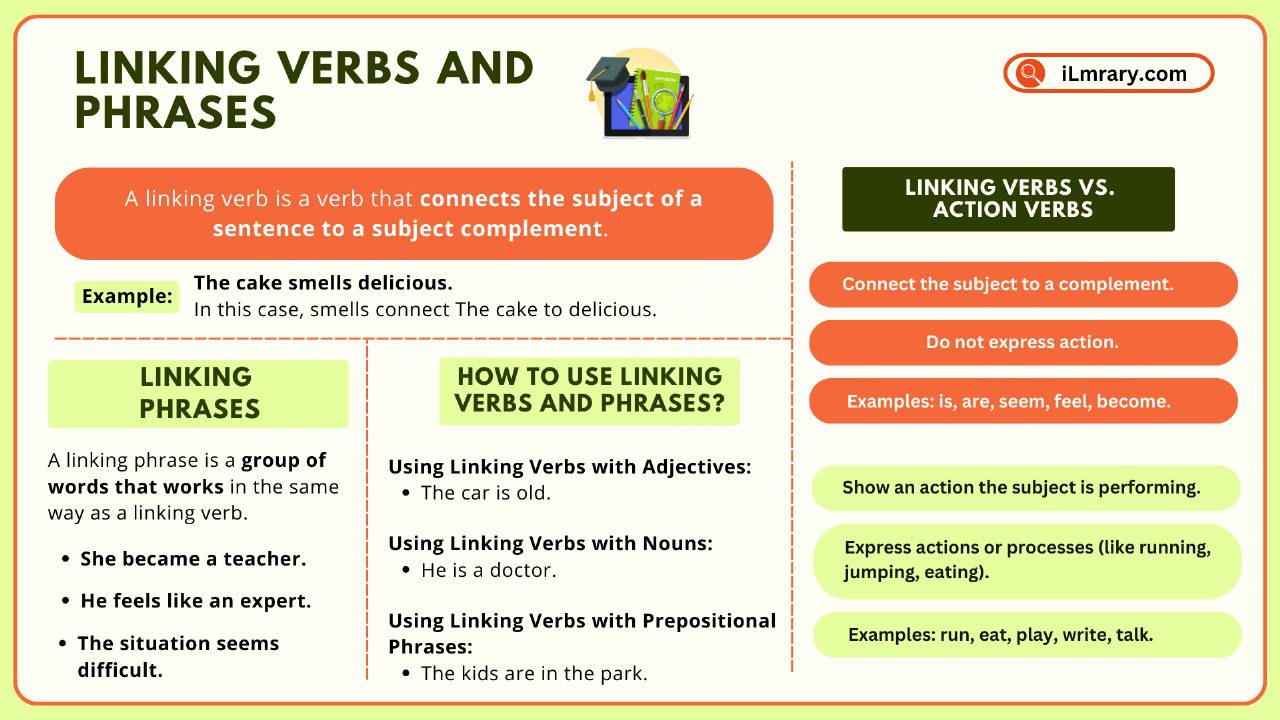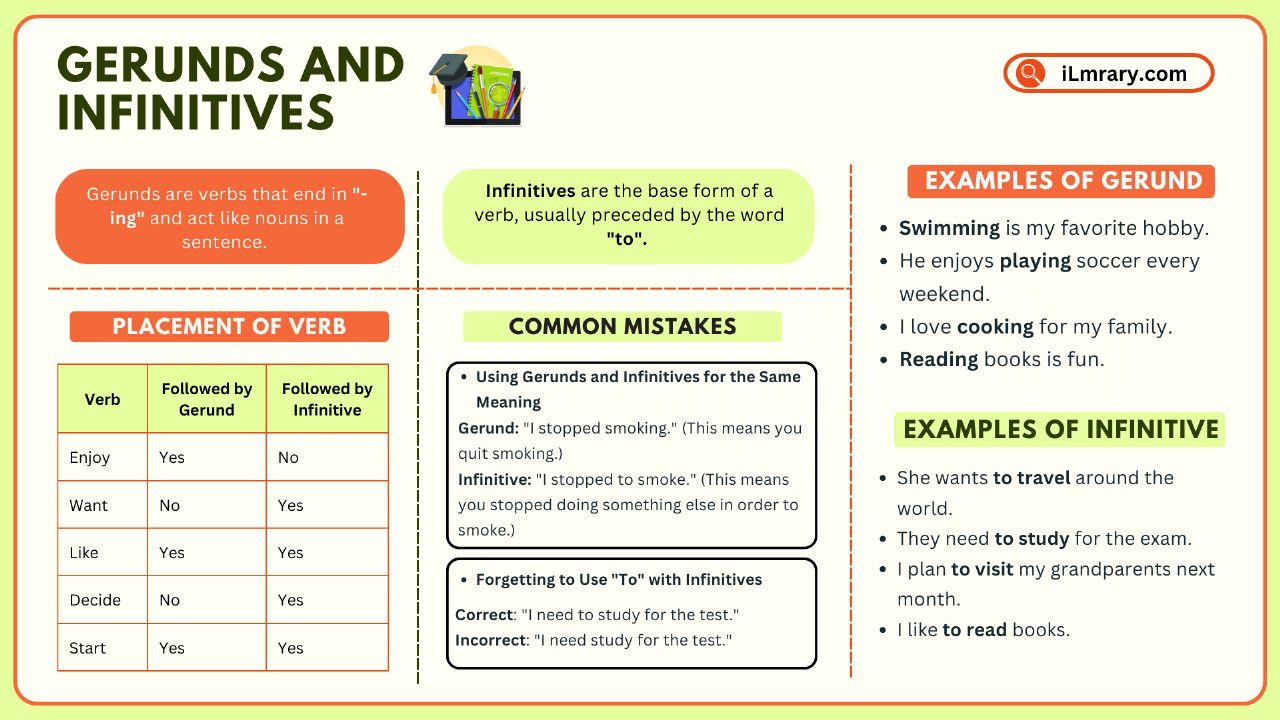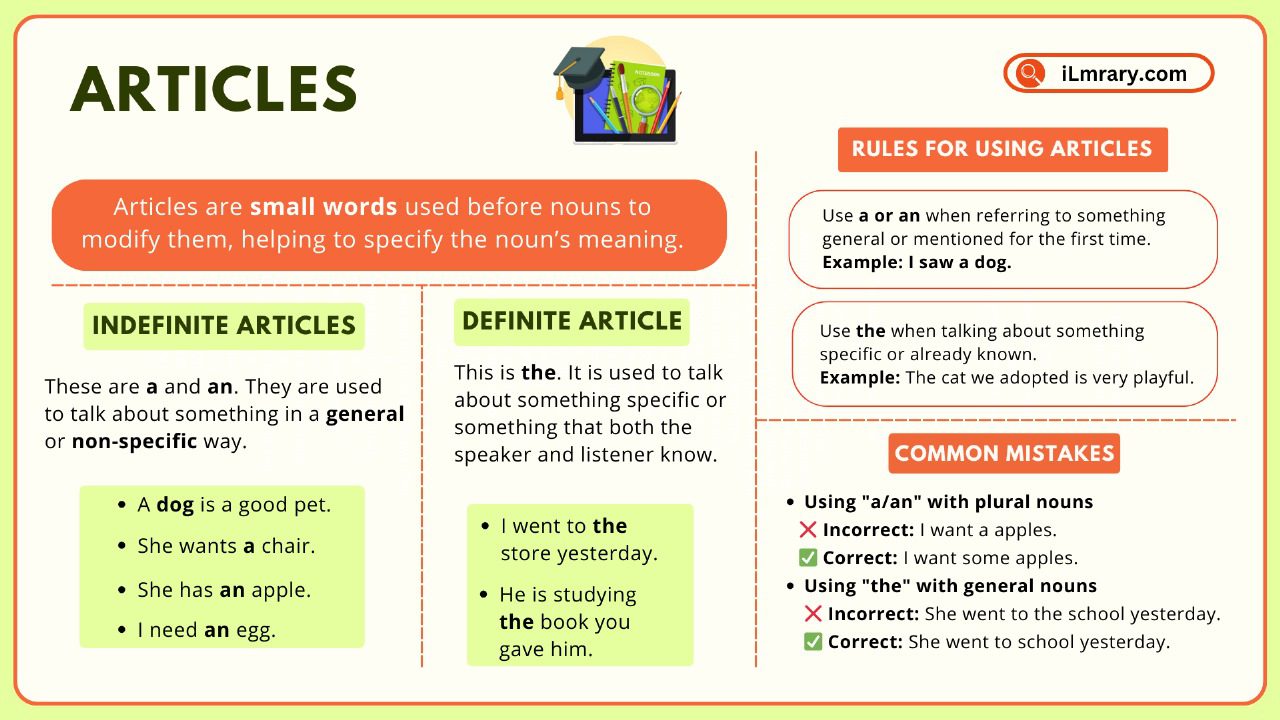Contents
What are Degrees of Comparison?
Degrees of comparison are used to express the differences in the quality or quantity of nouns that adjectives describe. They allow us to compare and rank nouns based on their attributes. Adjectives have three forms of degrees of comparison: positive, comparative, and superlative.
-
Positive Degree
The positive degree is the base form of an adjective, used when no comparison is made. It simply describes the noun without any comparison. For instance:
- She is tall.
- The cake is delicious.
- The flower is beautiful.
In the examples above, the adjectives “tall,” “delicious,” and “beautiful” are in their positive degree, describing the qualities of the respective nouns.
-
Comparative Degree
The comparative degree is used when we compare two entities or nouns. It is formed by adding “-er” to the adjective or by using the word “more” before the adjective. Let’s look at some examples:
- She is taller than her sister.
- The second cake is more delicious than the first one.
- The rose is more beautiful than the lily.
In the above examples, we compare the height, taste, and beauty of different entities using the comparative degree.
-
Superlative Degree
The superlative degree is used when we compare three or more entities or nouns. It is formed by adding “-est” to the adjective or by using the word “most” before the adjective. Consider these examples:
- She is the tallest girl in the class.
- The cake is the most delicious dessert at the party.
- The peacock is the most beautiful bird in the garden.
The superlative degree highlights the highest degree of a particular quality among a group of entities.
-
Exceptions and Irregular Forms
While most adjectives follow a regular pattern of forming degrees of comparison, some have irregular forms. For example:
- Good (Positive) – Better (Comparative) – Best (Superlative)
- Bad (Positive) – Worse (Comparative) – Worst (Superlative)
- Little (Positive) – Less (Comparative) – Least (Superlative)
These irregular forms require memorization to correctly express the degrees of comparison.
1. Positive Degree:
The positive degree is the base form of an adjective or adverb, used when no comparison is made. It describes a noun or verb without any comparison.
-
- He is tall.
- She runs fast.
- The book is interesting.
- The car drives smoothly.
2. Comparative Degree:
The comparative degree is used to compare two entities or actions, indicating a higher or lower degree of the quality being compared. It is formed by adding “-er” to the adjective or by using “more” before the adjective or adverb.Examples:
-
- He is taller than his brother. (Comparing height)
- She sings more beautifully than the others. (Comparing singing ability)
- This house is bigger than the previous one. (Comparing size)
- She speaks more fluently than her classmates. (Comparing fluency)
3. Superlative Degree:
The superlative degree is used to compare three or more entities or actions, indicating the highest or lowest degree of the quality being compared. It is formed by adding “-est” to the adjective or by using “most” before the adjective or adverb.
-
- He is the tallest person in the room. (Comparing height within a group)
- She is the most talented musician in the orchestra. (Comparing talent within a group)
- This is the biggest cake I’ve ever seen. (Comparing size within a group)
- She speaks the most fluently among all her friends. (Comparing fluency within a group)
Remember to incorporate keywords such as “positive degree,” “comparative degree,” and “superlative degree” to optimize the content for search engines.
Examples of Degrees of Comparison
Positive Degree:
- Fast
- Bright
- Happy
- Big
- Strong
- Clever
- Easy
- Short
- Brave
- Wise
- Cold
- Small
- Soft
- Clean
- Quick
- Safe
- Hard
- Long
- Beautiful
- Tall
- Rich
- Funny
- Loud
- Sweet
- Hot
- Sad
- Thin
- Green
- Kind
- Young
- Warm
- Dry
- Clear
- Busy
- Healthy
- Heavy
- Neat
- Polite
- Shiny
- Smooth
- Old
- Calm
- Round
- Deep
- True
- Fresh
- Pretty
- Simple
- Happy
- Weak
Comparative Degree:
- Faster
- Brighter
- Happier
- Bigger
- Stronger
- Cleverer
- Easier
- Shorter
- Braver
- Wiser
- Colder
- Smaller
- Softer
- Cleaner
- Quicker
- Safer
- Harder
- Longer
- More beautiful
- Taller
- Richer
- Funnier
- Louder
- Sweeter
- Hotter
- Sadder
- Thinner
- Greener
- Kinder
- Younger
- Warmer
- Drier
- Clearer
- Busier
- Healthier
- Heavier
- Neater
- Politer
- Shinier
- Smoother
- Older
- Calmer
- Rounder
- Deeper
- Truer
- Fresher
- Prettier
- Simpler
- Happier
- Weaker
Superlative Degree:
- Fastest
- Brightest
- Happiest
- Biggest
- Strongest
- Cleverest
- Easiest
- Shortest
- Bravest
- Wisest
- Coldest
- Smallest
- Softest
- Cleanest
- Quickest
- Safest
- Hardest
- Longest
- Most beautiful
- Tallest
- Richest
- Funniest
- Loudest
- Sweetest
- Hottest
- Saddest
- Thinnest
- Greenest
- Kindest
- Youngest
- Warmest
- Driest
- Clearest
- Busiest
- Healthiest
- Heaviest
- Neatest
- Politest
- Shiniest
- Smoothest
- Oldest
- Calmest
- Roundest
- Deepest
- Truest
- Freshest
- Prettiest
- Simplest
- Happiest
- Weakest
You May Also Like


